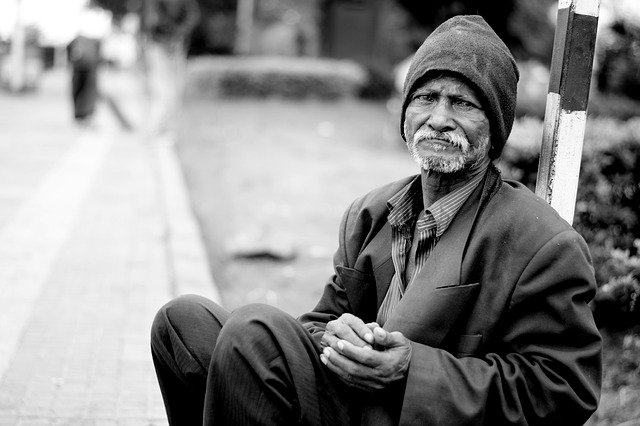
Concerns about the mental health status of young people are increasing with some epidemiological research purporting to suggest heretofore unheard of and skyrocketing rates of Depression and Anxiety Disorders. The response to this information has often been to call for more specialty mental health services and to create social interventions that are designed to lessen what much commentary calls “huge pressures” supposedly facing young people. Media headlines featuring the words “epidemic” and “crisis” linked to terms “mental health” and “mental illness” are becoming increasingly common.
Unfortunately, all this attention is not likely to help us understand what social phenomenon we may be witnessing nor whether many of the proposed interventions are likely to help. A new mental health briefing paper published last week well illustrates this point (Patalay & Fitzsimons, 2017).
“One in four 14 year old girls have depression”
“Mental ill-health among children of the new century: trends across childhood with the focus on age 14” (Patalay & Fitzsimons, 2017) was published on 20th Sep 2017 by the Centre for Longitudinal Studies and the National Children’s Bureau. The population cohort that this report focuses on is the Millennium Cohort Study of over 19,500 young people from England, Scotland, Wales and Northern Ireland.
The measurement of mood state of these 14 year olds includes both youth and parent inputs and for youth, applies the self-report, Short Mood and Feelings Questionnaire (sMFQ). Respondents are asked to report whether a certain mood state was experienced as either: “not true”; ”true sometimes”; “true”. The time frame offered “recently” and “how you have been feeling or acting over the past two weeks”. Examples of some questions are: “I felt miserable or unhappy”; “I was very restless”; “I felt lonely”; “I thought I could never be as good as other kids”; “I did everything wrong”. Reporting either “sometimes true” or “true” can be scored as a positive response.
These self-reported emotion descriptor findings are reported as 24% of girls and 9% of boys “suffering from high symptoms of depression”. In another section of the report the authors state that these finding are “indicative of suffering from depression”, which to both the general and professional reader means the mental disorder diagnosed as Depression (herein the mental disorder of Depression is written with a capital “D” to ensure clarity from a negative emotional symptom self-reported as depression).
This is a briefing paper aimed at the general public and not a scientific research paper, so unfortunately no breakdown of item scores of the various emotional items measured was reported, no analysis of scores differentially rated as “sometimes true” or “true” was provided and no demonstrated diagnostic validation for Depression case-ness was confirmed, thus we are unable to evaluate how these conclusions were drawn.
Also reported is that “emotional symptoms often differed depending on self or parental report” (parental report was based the Strengths and Difficulties Questionnaire) and that there was weak correlation between parental and child reports of mood state in this cohort. The conclusion drawn from this was that “parents may not be aware of their daughter’s [D]epression.” Unfortunately there was no case-based analysis in which both parental and child reports were concurrently assessed for parent/child pair agreement provided to validate that conclusion.
The report also presents a quartile segmented socio-economic status related to sMFQ results illustrated by bar graphs. The authors conclude “children from poorer homes were more likely to suffer from high depressive symptoms compared to children from better off homes”. Again, as this is a short briefing paper, there was no analysis provided to help us determine if this difference was statistically significant or not and a critical look at the bar graphs shows that scores for girls in the second and third quintiles were higher (more negative mood) than for those in the lowest quintile, while for boys there seem to be no differences between the lowest and the third quintiles, both of which seem to be only 1 or 2% points greater than that of the highest quintile. It is difficult to determine if these bar graph diagrams support or do not support the conclusion drawn.
An accompanying press release from the NCB stated in its headline that: “huge numbers of teenagers are [D]epressed”. It reports that the rate of [D]epression rose from 12% in girls and 5.5% in boys in 1996 to 24% in girls and 9% in boys now. Later the release states: “… we don’t know for sure what is fuelling this rise in [D]epression” and goes on to suggest two factors: “huge pressures … anxiety about passing exams and getting a job, to worries about body image, fuelled by a hyper-sexualised media environment”; and “cyberbullying”. It then goes on to suggest two untested interventions; more “specialist services” and “a whole school approach to wellbeing”.

14 year old children self-reported high symptoms of depression: 24% of girls and 9% of boys.
Critical considerations
The report and its companion press release from the NCB paints a picture that the mental disorder of Depression in young people is rapidly on the rise. Taken up by the media in the UK, this report has been translated into headlines such as those in the Guardian, Mail and Independent that one quarter of 14 year old girls in the UK suffer from the mental disorder of Depression. Most reports call this a crisis, including a quote attributed to Anna Feuchtwang of the NCB. Dr. Dubicka of the Royal College of Psychiatrists is quoted as saying: “this report confirms that mental illness among young people has reached a crisis point.” Many media reports parroted the suggested causes as “exam stress”; “stress at school”; “worries about body image”; “bullying”. In short, a caldron of emotional angst in the mainstream media followed the release of this report. How “exam stress”, “stress at school” and “worries about body image”, especially in the absence of the four horsemen of the apocalypse, could cause Depression is never critically questioned.
Perhaps it is time to take a deep breath and step back from the excitement and critically consider what this briefing actually shows. To do that, we need to address a number of issues. These are:
- The confusion in our language related to negative emotional states;
- The importance of understanding phenomenological features found in different and specific age cohorts;
- The difference between interventions that could perpetuate negative emotional states in this cohort of young people from those that might ameliorate them.
Using the right language
This report uses two different terms to describe its results. One is “high symptoms of depression” and the other is [D]epression. Now, it is clear that self-reported “high symptoms of depression” do not equal the diagnosis of the mental disorder we call Depression. Indeed, a diagnosis of Depression cannot ever be made using a self-report scale alone, regardless of its psychometric properties. However, in the briefing itself, the NCB press release, the media reporting and even in the quote from the psychiatrist, the phrase “high symptoms of depression” was taken to equal the mental disorder of Depression. This is not only untrue, but it creates misunderstanding between the differences between people’s experiences of negative emotional states and the presence of a mental disorder. In other parts of medicine this would be akin to calling symptoms of pneumonia, well, pneumonia. For example, cough and a fever are symptoms of pneumonia, but are not pneumonia.
This use of the phrase “high symptoms of depression” as an equivalent for Depression is both incorrect and confusing. When professionals confuse the situation by using these terms interchangeably, the media follow that confusion. When the media confuse the two, the public becomes confused. So the question must be asked, why in the field of mental health does this confusion reign? Where is the clarity needed for useful discourse?
What does the phrase “high symptoms of depression” mean?
Many different negative emotional states exist that are not “high symptoms of [D]epression”. Only 5 of the 13 questions asked on the sMFQ are consistent with the diagnostic criteria of Major Depressive Disorder (DSM 5) and for them to be considered diagnostically present they require additional qualifiers of specificity, duration and presence of significant functional impairment (DSM 5). Indeed, many of these items are descriptors of negative emotional states commonly found in many different mental disorders and which, if they occur “sometimes” are consistent with living through the normal strains and challenges of everyday life: the cognitive, emotional and behavioural responses to the “slings and arrows of outrageous fortune”. Instead of “high symptoms of depression” they may possibly be more appropriately called mental malaise.
It is high time we as clinicians, researchers, socio-cultural critics and society in general began to pay more attention to what we mean when we have conversations about complex and nuanced topics such as negative emotions. Unhappiness is not Depression. Misery is not Depression. Demoralisation is not Depression. We have an incredibly rich lexicon that allows us to critically unpack the many and varied subtleties of negative emotions. We defer to the emoji option at our peril.
And, this confusion can have far reaching negative results. For example, if have lost my job and am demoralised, I don’t need a medicine or a therapy, I need a job. Substituting a life-coach for an economic social safety net or programs that may alleviate income disparity is not the answer. Social ills are not solved by mental health care. Indeed, one might argue that such a perspective takes our attention away from the need to vigorously address economic, racial and gender inequity. And, as Dr Allen Frances has eloquently argued, using diagnostic terms to describe everyday life experiences may have multiple negative consequences (Frances, 2014).

Social ills are not solved by mental health care. Indeed, one might argue that such a perspective takes our attention away from the need to vigorously address economic, racial and gender inequity.
Understanding different age cohorts
In our work we should try and be informed by some of the best and most fulsome research undertaken in social-cultural study of populations, particularly cross generational analysis of young people. The cohort described in the above briefing has been described by Jean Twenge as iGen (Twenge, 2017). Based on extensive analysis of multiple longitudinal studies, this cohort exemplifies, not extended adolescence, but extended childhood, with substantially delayed entry into the markers (such as dating, driving a car, going out without parents, working during the summer, having a part time job, etc.) that in previous generations established entry to the life phase called adolescence. Twenge argues that the iGen cohort focus primarily on emotional safety, study less, spend much less face-to-face time with other people, spend much of their day online, and seem to be emotionally unready to take on the life challenges that for previous generations were a rite of passage into self-reliance. Self-reports of loneliness, inability to modulate emotions and unhappiness are highly correlated with hyper-connectivity online, and are characteristic of the emotional life of the iGen cohort. This cohort is not ill, but its members do seem to engage with the world differently to previous generations. On self-report scales such as the sMFQ, this emotional malaise may become transcribed into positive scores that researchers can interpret as “high symptoms of depression”.
These negative emotions are also not likely due to unique and highly traumatic social factors such as “exam stress” or “concerns about body image”. These concerns have faced every proceeding generational cohort. They are not traumatic and are part of the normal developmental path. What is different is that this cohort seems to be arriving at these challenges unprepared to deal with them. This is not Depression. Perhaps it may be a developmental surcease. Such a synchronicity may give rise to intensely experienced negative emotional states when faced with the vicissitudes of life: a mental malaise. But this is not a mental disorder.

Jean Twenge argues that iGen are growing up more slowly than previous generations: 18-year-olds look and act like 15-year-olds used to.
Interventions that help and interventions that may harm
If we consider the above criticism to be at least partially valid, we are not going to effectively address this phenomenon by adding more specialised mental health services to deal with mental malaise. We already don’t have enough of those services to ensure rapid access to effective care for those young people who have mental disorders such as Depression. We don’t need to stream young people who have negative emotional states that are not mental disorders into specialised mental health services. If we focus on therapy instead of what is needed to help youth grow up and successful navigate the realities of life, we are in danger of perpetuating this state of extended helplessness. Similarly, if we focus our educational efforts on wellness (a term that once meant addressing social injustice to ensure human rights and equal opportunities for all) we run the risk of turning our youth into avid consumers of the latest highly marketed wellness craze, be that the so-called wellness products sold on “GOOP”, the pop-wellness psychology based on the teachings of Anagarika Govinda, the pseudo science of cancer curing wellness diets or the joys of “wellness water”. Seriously, if you think I am kidding just Google wellness and add any noun following (e.g. wellness cannabis). It is unlikely that developmentally derived malaise can be quenched by such wellness interventions. Indeed, they may be more likely to accentuate it.
Implications for practice
It may be instructive to think about this issue of mental malaise in the same way as we have thought about obesity. Both may be the result of living in hyper-abundance, the outcome of which may engage various “life-strategy” activities at the population level that do not occur in situations of greater sparsity. Both may be perpetuated by social, technological and economic factors. Neither is likely to be solved by providing more health care or increasing the factors that created and perpetuate them. Prevention rather than treatment should be the focus of attention.
We need to remember that we bring things into being by naming them. Let us be careful with our language. Let us expand our narrow considerations of understanding young people from models that we created based on generational cohorts very unlike what we are seeing now. Let us not medicalise everyday life. Let us not call people who are experiencing negative emotional states mentally ill. Let us address social challenges through channels that can help us deal with them, not through the already under-resourced systems of care for those with mental disorders.

Prevention rather than treatment should be the focus of attention.
Conflicts of interest
None reported
Links
Primary paper
Patalay P, Fitzsimons E. (2017) Mental ill-health among children of the new century: trends across childhood with a focus on age 14 (PDF). September 2017. Centre for Longitudinal Studies: London
Other references
Angold, Costello. (1987) Short Moods and Feelings Questionnaire (PDF).
NCB (2017): One in four girls is depressed at age 14, new study reveals. National Children’s Bureau.
DSM-5 (2013) Major Depressive Disorder: DSM-5™ Diagnostic Criteria (PDF). Diagnostic and Statistical Manual of Mental Disorders, Fifth Edition. American Psychiatric Association.
Frances A. (2014) Saving Normal: An Insider’s Revolt against Out-of-Control Psychiatric Diagnosis, DSM-5, Big Pharma, and the Medicalization of Ordinary Life.
Twenge, JM. (2017) iGen: why today’s super-connected kids are growing up less rebellious, more tolerant, less happy – and completely unprepared for adulthood. Atria, NY.
Photo credits
- Photo by Jevgenij Voronov on Unsplash
- Photo by Jared Sluyter on Unsplash

how has this debate developed?
“We need to remember that we bring things into being by naming them.” – is this agreed?